Globally the world has changed, especially when it comes to technology and whilst the ongoing pandemic may have accelerated the digitisation of customer and supplychain interactions and internal operations by three to four years it’s not the only change happening. Examining how European technology companies interact, trade and do business with the rest of the world is more important than ever before.
At the EU Tech Chamber competitiveness through collaborative thinking, sustainability and expansion via European and international growth are the three pillars of our work. By focusing on these it is possible to ensure Europe competes in the global tech market innovatively and profitably with integrity. However, competing isn’t enough.
Collaboration with other tech superpowers is essential not just for growth and expansion but also innovative and creative thinking. One such superpower is China, but in the current climate how can European technology companies take advantage of working with their Asian counterparts?
Global Economy and postpandemic picture
On March 11, 2020, the World Health Organisation declared Covid-19 a global pandemic, meaning that it had spread across the world and that all travellers were at risk of infection. With close to three million deaths at the time of writing, and many thousands recovering, the human cost has been horrific for each family bereaved, and those experiencing long Covid symptoms. The effect on households will be felt for years, and the effect on finances will linger as the world tries to mount an economic recovery.
Such is the extent of the impact the world economy shrank by 4.3%, over two and a half times more than the 2009 financial crisis. According to the latest World Economic Situation and Prospects figures from the United Nations the bestcase scenario is a recovery of 4.7%, barely offsetting the 2020 losses.
While government’s look to stimulus packages and hope vaccination programmes enable a return to growth, the reality is any economic recovery also needs to create resilience against any future global crises. This means that organisations across the world must look to their strengths, seek cooperation, and focus on a sustainable future. Such opportunities have been created by the EU-China Comprehensive Agreement on Investment.
Introduction of China and Europe’s status on the world stage
To understand fully the potential impact of the agreement between the EU and China it is important to look at the development of the European bloc of 27 and China. The process began more than nine years ago, and in that time both the EU and China have changed almost beyond recognition. The EU has more members, and some would argue is in a stronger global position after Brexit, despite the loss of the UK’s financial contribution. Its GDP without the UK remains $15 trillion. Brexit has also meant that countries across the EU are looking at further trade outlets.
In China the change has even been more dramatic. In 2019 the country’s Gross Domestic Product was $14.4 trillion USD. Yet it was a mere 11 years ago when it lagged behind much of the developed world. It was in 2000 that its nominal GDP overtook Italy, France in 2005, the United Kingdom in 2006, Germany in 2007 and Japan in 2010. By 2018 it only was behind the Eurozone and the USA. However, adjusting for purchasing power parity, as defined by the International Monetary Fund, it is the largest economy in the world.
This has also been a time when China invested heavily in research and development in technology across all sectors from finance to health, from communications to cloud storage, and this has been enhanced with a surge in foreign direct investment, overtaking the US with $163bn of inward investment.
Importance of China and EU cooperation
The EU-China Comprehensive Agreement on Investment is a milestone in trade relations and emphasises that the two are the largest trading blocs that can be mutually beneficial in the future, with the ability to shape developments on a global scale. This is apparent in the technology sector as the pandemic showed ever greater demand for new and innovative solutions.
Three trends have been identified for future investment at the CNBC East West tech conference last November. These are more services delivered online, greater use of ‘smart’ devices and increased use of wireless technology, including the associated batteries and power control.
Many EU based companies are already either specialists in these areas, or can deliver investment to support developers in China and make sure of continued progress towards achieving Sustainable Development Goals. This combines with the EU Commission’s Horizon 2020 science and technology programme, which addresses food, agriculture and biotechnology; sustainable urbanisation; energy; aeronautics; and other areas including ICT, water, health, society, polar research, and space.
Coupled with the increasing industrialisation and pent up demand among the middle class effective cooperation and investment in scale is now possible. It would be remiss of any company not to engage, and China Chapter of EU Tech Chamber is one starting point. Above all there is a need to focus on three elements of future relationships: competitiveness, sustainability and expansion.
Political support for cooperation
Amidst a backdrop of increased geopolitical tension and strains on diplomatic relationships between east and west there is still considerable political backing for the trade deal, and despite rumblings about sanctions it is unlikely to have any imminent risk to investments and in the long-term partnerships and relationships in the business sphere will continue.
The political climate has been set with the Two Sessions of the National People‘s Congress (NPC) and the National Committee of the Chinese People‘s Political Consultative Conference (CPPCC) earlier this year. In addition, it set out the 14th five-year plan of China (2021-2025). The conferences defined China’s internal and external development strategies, as well as its future role on the world stage.
The summit is addressing ambitious but attainable 2035 targets, including a 6%-plus growth in the foreseeable future; reduction of unemployment with urban focus; continued food self-sufficiency and environmental improvement targets, a gigantic 18% CO2 reduction, largely through a significant drop in energy consumption (13.5%) per unit of GDP – and this with a projected higher than 6% annual economic output. Environmental improvement and protection targets are way above any environmental objectives of western countries.
China will take more measures to restructure its industry and energy mix in a greener way, and this will lay a solid foundation for peaking carbon dioxide emissions by 2030 and achieving carbon neutrality by 2060. The overarching policy of the fiveyear plan reflects China’s first in first out policy in the wake of the pandemic.
China and EU Comprehensive Agreement on Investment
Years of negotiations led to the signing of the comprehensive agreement. This landmark agreement highlights the rapprochement between China and the European Union and illustrates the importance of trade between the two regions. It guarantees an unprecedented level of access to EU investors in China.
The agreement means that EU companies can buy or establish new organisations in China. An important aspect to EU negotiators was a commitment by China on new rules surrounding state owned enterprises, including any subsidies and a pledge towards greater transparency. This has long been a sticking point for western governments and is an important achievement from the EU given the legacy of the frosty relations between the US and China under the Trump administration with no signs that President Biden will move quickly to resolve them.
European Union exports to China grew by 2.2% last year and imports rose by 5.6%. In comparison, exports to the U.S. dropped by 8.2% and imports fell by 13.2%. The latest figures, released by Eurostat, showed that China now has an even bigger role in how European economies perform. The promise of increased access under the agreement is one that will encourage ambitious companies to enter the market, and those that do will be the first not only to access the market, but will be ahead of competitors in establishing relationships, growing networks and understanding ways of working.
Furthermore, given that many articles in the agreement move closer to European standards barriers have been removed. The ambitious plans from China towards reducing its carbon footprint, and work towards environmental protection will be familiar to EU company’s principles.
Technology and Innovation
Ahead of the agreement there was already a tradition of cooperation in EU and China collaborating on research and innovation. That the agreement copper-fastened this was reflected by EU Commissioner Moedas. “The EU and China both recognise that research and innovation are vital to ensure our future prosperity and to tackle global challenges,” he said, adding: “Together, we can do this better. That is why we want to step up our cooperation in research and innovation in areas of mutual interest, based on fair framework conditions in the spirit of reciprocity.”
What is clear that there are many ‘hot topic’ areas of the tech sector that will match Chinese and European ambitions in fields such as AI and robotics. With more than half of the current EU investment in China in the manufacturing sector the agreement opens further opportunities with a commitment from China on the likes of developing new clean energy vehicles. This comes alongside binding commitments in financial services, international maritime services, environmental, construction and computer services.
There are also opportunities in cloud storage, and private health tech. However, the reassurances on working relationships that may previously have had a chill factor. China has made it clear there will be a prohibition on investment requirements that compel transfer of technology. In addition, there will be no interference in contractual freedom in technology licensing and protection given to confidential business information. An example of where greater transparency will encourage investors is in cloud services.
Not only has the investment ban been lifted but a clear equity cap of 50% for EU investors means that the level of commitment and risk is apparent.
Collaborate now for future gains
The EU- China Comprehensive Agreement on Investment took years of negotiations to arrive in its current format. Even as the full implications and opportunities have yet to be fully realised. It is up to businesses and investors to begin the processes to maximise what they can achieve. Equally there is a clear pathway to partnership in all aspects of the technology and innovation sectors. All will understand as they explore their fields of expertise that there is much to be gained. Working alongside China, we can be more competitive, the industry is more sustainable, and expansion can become a reality rather than a rarity. It is truly an east-west trade deal that stands well away from the dispute between China, the US and Australia.
In the context of the pandemic this is an agreement that shows that by collaborating now it can aid the economic global recovery. It can speed up the recovery, it can help EU countries counter the financial uncertainty, but most importantly it can be a framework to future proof against any global issues that may come down the line.
Sierra Frhr. von Tucher
Board Member,
EU Tech Chamber





















